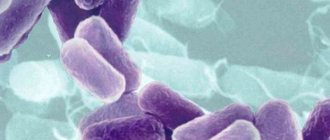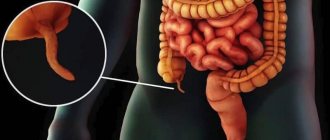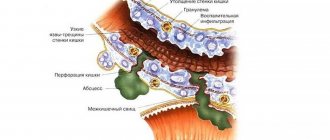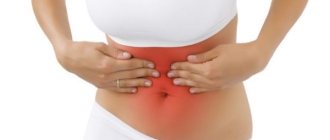Just a minute ago the baby was sleeping peacefully in the crib. But suddenly he began to cry, pulling his legs to his tummy, and this cry did not stop for several hours. This is how colic manifests itself in a newborn - a common and very alarming condition for a baby for parents.
Why do they arise? Is it possible to prevent their occurrence? And most importantly, how to help the baby and ease his suffering? Alexander Ushakov , a pediatrician at the MEDSI Children's Clinic on Pirogovskaya, answers the questions .
Causes of colic in infants
“There is no one, one hundred percent proven and known to doctors cause of intestinal colic in infants,” comments pediatrician Alexander Ushakov. “Various factors can lead to their occurrence.”
There are several main ones:
- swallowing air while eating;
- feeding the child too large portions of formula;
- feeding with an inappropriate formula;
- a mother’s diet containing foods that cause an allergic reaction or digestive disorders in the child.
These factors lead to the formation and excessive accumulation of gases in the baby’s intestines. They form large blisters that stretch the intestinal walls and cause discomfort in the abdomen, and often severe pain. In response to them, the child chokes on crying.
“With artificial feeding, the risk of developing intestinal colic in a child increases,” says Alexander Ushakov. — Breast milk contains special enzymes that reduce the risk of allergic reactions in the baby and digestive disorders. Artificial mixtures do not contain these enzymes. In addition, when feeding through a bottle, the baby swallows more excess air than when breastfeeding. This also increases the risk of colic.”
But it is wrong to consider artificial feeding the main cause of the problem. It often occurs in infants. The formation of excess gases can be caused by the mother's diet, which provokes food allergies in the baby, or by the natural colonization of the child's intestines by microorganisms that live on the skin of the mother's breast.
Colic in a newborn - symptoms
Baby crying accompanies any discomfort that the baby experiences. The baby simply cannot tell his parents in a different way about what is bothering him. But colic and gas in newborns can be recognized by characteristic signs.
Anxiety . The baby cannot lie quietly in the crib and shows signs of anxiety even in his arms. For healthy babies who feel well and enjoy contact with their parents, this behavior is not typical.
A shrill cry . The baby cries loudly and loudly, and looking at him, the mother understands that the baby is in pain. The crying is not monotonous, it is interrupted, then becomes louder and can last up to several hours.
Pulling the legs towards the stomach . This is one of the main signs that allows you to understand that a newborn has colic. The child experiences pain in the intestinal area and instinctively tries to tighten his legs to reduce pain. This is easy to notice when the baby is lying in the crib. The same thing happens in the arms of parents.
Release of gases . The baby seems to be straining his tummy, and gas can be heard coming out from time to time. This helps the baby and reduces the pain of a colic attack, but after a while the pain may occur again.
Pale skin . During an attack of colic and painful intestinal spasms, the baby's face and arms may look paler than usual.
Changing the type of stool . With severe digestive disorders, which are always accompanied by intestinal colic, the child’s stool may acquire a greenish tint. Lumps of mucus may appear in it, and the frequency of the urge to go big increases.
All symptoms or only some of them may be observed at the same time. With severe attacks of colic, the baby experiences serious discomfort, so it cries, raises its legs, looks pale, and its tummy feels tight and tense to the touch.
When does colic begin and go away in a newborn baby?
Most often, parents encounter an attack of intestinal colic in the first month of the baby’s life. This occurs in the second or third week and lasts up to six weeks. Some babies may experience pain for longer, up to four to six months, but this is the exception rather than the norm.
The duration and severity of attacks is always individual, and it is impossible to predict how long colic lasts in newborns. Sometimes the pain goes away quickly: the mother’s attentive attitude and help to the baby help calm the baby within a few minutes. But usually the painful sensations do not go away for up to three hours, occur immediately after feeding and can persist until the next feeding.
“If the baby is gaining weight and his general condition is good, then with a high degree of probability we can say that everything is fine with him,” notes pediatrician Alexander Ushakov. — Parents should pay attention to the nature of crying. Intestinal colic is characterized by multi-tonal, intermittent crying. If the crying is monotonous and continues for several hours, this may indicate problems in the baby’s body, for example, increased intracranial pressure.”
Colic in a newborn - what to do
Parents can help their child get rid of painful sensations. The best remedy for colic in newborns is affection and warmth. Try to calm the baby down, take him in your arms, and place his bare tummy against your stomach. Skin-to-skin contact relaxes the baby, reduces the severity of intestinal spasms, and helps reduce pain.
A warm diaper placed on the tummy will also help, but it is important to make sure that it is warm and not hot. A cloth that is too hot can burn your delicate skin and only make the pain worse.
“Make a gentle tummy massage,” advises pediatrician Alexander Ushakov. “Lightly stroke the tummy clockwise, this will ease the baby’s suffering.”
If colic appears too often and disrupts the baby’s condition and sleep, you should consult a doctor. Your pediatrician may recommend drug therapy.
— Means to reduce gas formation. Such drugs “break” large gas bubbles in the intestines into small ones, which facilitates their release naturally. In addition, when the volume of bubbles decreases, the pressure on the intestinal walls decreases, bloating disappears, and the pain goes away.
— Preparations with probiotics. They change the composition of the intestinal microflora and suppress pathogenic microorganisms that can cause bloating and discomfort. Thanks to this, the frequency and severity of infant colic are reduced.
The doctor should prescribe medications taking into account the age and weight of the child. An incorrectly selected dosage will not bring relief to either the child or the parents. And independent selection of medications for children in the first year of life is unacceptable due to the high risk of adverse reactions.
“In extreme cases, when the volume of gas is very large and other means do not help, you can use a gas outlet tube,” clarifies Alexander Ushakov. “But before using it, carefully read the instructions so as not to harm your baby.”
Relieving intestinal spasm:
- In anticipation of colic, give your baby a bath. Warm water and mother's gentle hands soothe and relax. And if you add an infusion of mint or motherwort to the water, the effectiveness of such a bath will be even greater;
- Place your palm, a warm diaper or a non-hot heating pad on your tummy. Although, of course, the best heating pad for a child is the mother’s belly. For sweet dreams, place your precious baby on your front abdominal wall. It is better if it is skin-to-skin contact.
How to get rid of colic in a newborn
Proper care helps reduce the risk of infant colic. These methods will help breastfed and bottle-fed babies.
Place the baby on your tummy. Do this before each feeding and leave for 10 minutes. This simple exercise improves intestinal motility and strengthens the anterior abdominal wall.
Hold in your arms after eating . Do not rush to put your baby in the crib after feeding, even if he has fallen asleep. Hold it vertically, gently press it to yourself, and place the head on your shoulder. Walk around the room for a few minutes with the baby in your arms. During this time, the excess air that the baby swallowed during feeding will be released, and gases will not accumulate in the intestines.
Do gymnastics . During the day, stroke the baby, do a light massage of the back and tummy, and perform acupressure around the navel. Stroking massage movements relax the digestive system, eliminate colic, and are very pleasant for the baby and mother.
“Dill water, beloved by many, does not help in the treatment of colic in newborns,” comments pediatrician Alexander Ushakov. “It differs from breast milk and artificial formula in its physical and chemical properties and may not only not relieve pain, but even intensify and provoke new attacks of colic.”
Improving intestinal motility:
- practice loose swaddling. Sufficient physical activity of your baby promotes timely bowel movements and removal of accumulated air;
- For your baby's active lifestyle, use comfortable diapers. This could be Huggies® Elite Soft - a line for babies from birth - comfortable and comfortable with soft pads in the inner layer that absorb loose stool and moisture in seconds. And a unique elastic pocket located inside protects against leakage at any time of the day or night;
- Place your baby on his tummy for 10-15 minutes before each feeding. During “air baths”, you can do a light massage of the abdomen, stroking it in a circular motion with your fingertips around the navel in a clockwise direction. Good muscle tone of the anterior abdominal wall not only reduces the occurrence of colic, but is also the basis for preventing constipation, which may occur later in the child’s life;
- If the baby is restless, do gymnastics: press the child’s knees to the tummy several times and then straighten them. Carry him in the “tiger on a branch” position, when the baby’s head is in your palm, and he himself is back up on your forearm.
What should a mother eat if her baby has colic?
For breastfed babies, mother's milk is the only and most beneficial food. But if a mother includes allergenic, dangerous foods in her diet, this can disrupt the digestive processes in the child’s body.
Colic in a breastfed newborn may develop in response to the consumption of certain protein foods. A nursing mother must adhere to a dairy-free diet and avoid:
- whole milk;
- kefir;
- yogurt;
- cottage cheese.
An unpleasant reaction on the part of the child’s body can be caused by the mother’s consumption of:
- beef;
- veal;
- sausages;
- meat delicacies.
You can safely include steamed pork and lamb in your diet. White and red fish are useful protein foods. They will not harm either the mother or the child, but will only benefit fresh vegetables and fruits, cereals, and eggs.
“The psychological climate in the family is no less important,” comments pediatrician Alexander Ushakov. – During feeding, you need to provide yourself and the baby with comfortable conditions, take your time, and relax. It is important that the mother looks at the baby when feeding, and he, in turn, looks at the mother.”
Power change:
- For nursing mother:
— try to exclude foods that increase gas formation from your diet. These include: rye bread, legumes, coarse, including dried, vegetables and fruits with dense fiber, cold and carbonated drinks, coffee, chocolate, yeast dough in large quantities, fresh cabbage, melon and other melons, canned food, strong heated fats, especially in the form of gravy with onions and spices, apricots, grapes, gooseberries, raspberries, sea buckthorn, cucumbers, turnips, radishes;
- replace whole cow's milk, rich in foreign protein, with fermented milk products (ryazhenka, kefir, acidophilus, etc.).
The effect of using such a restrictive (“elimination”) diet appears within 3–5 days. If the child does not become calmer, return to the usual diet.
- For a breastfeeding baby:
— pay attention to the correct placement of the baby to the breast. It is important that as much of the areola as possible gets into the area of the baby’s lower jaw, then the amount of air swallowed will be minimal. This application is called “asymmetrical”. If necessary, consult a lactation consultant;
- at the end of feeding, give the baby the opportunity to release the air that he swallowed. To do this, hold it in a “column” for several minutes;
- try to feed the baby a little earlier than he is completely hungry. The act of sucking becomes more measured, and very little air enters the digestive tract.
- For a bottle-fed baby:
— discuss with the doctor who is monitoring your baby the possibility of changing the formula. Perhaps this measure will have the desired effect;
- use orthodontic or anti-colic pacifiers. The peculiarity of their design allows you to reduce the amount of air swallowed.











